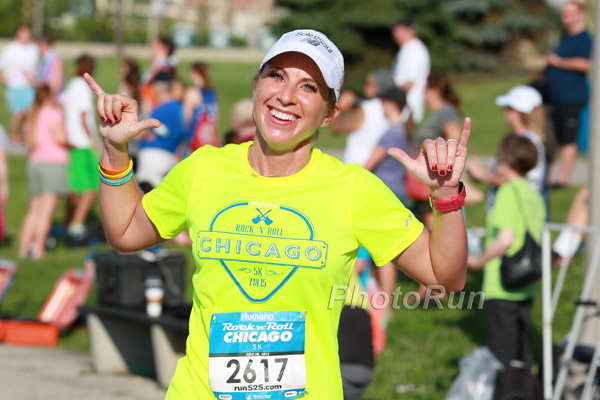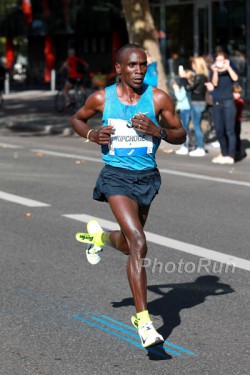A Marathon Record for The World to Watch
Uta Pippig is a three-time champion of the marathons in Boston and Berlin, writer and public speaker for “Take The Magic Step®” and “Running to Freedom™.” She is now also writing for the German daily newspaper “DIE WELT”.
We sit spellbound in front of our TV sets, or line the streets either exuberant or worried when our favorite runner is leading or starts losing ground in the most crucial phase of a race. We want to follow everything up close and personal. We want to be right there when everything happens.
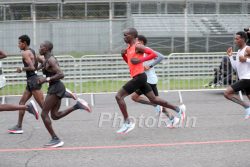
The voices of the crowds are getting louder. Finally, we see the leading cars and hear their shrill horns. The first athletes race around the corner, rushing past us. We break out in jubilation, thrilled by the drama happening right in front of us. Could we see a record today?
Two Hours is Possible
The attempt to break one of the last barriers of human performance—the two-hour mark for the 26.2-mile marathon distance—on the Formula 1 circuit in Monza, Italy on May 6 was almost successful. Eliud Kipchoge from Kenya, now the fastest man over the distance, came incredibly close to this magical mark with 2:00:25 hours.
He “gave the world 25 seconds,” as he said humbly in the interview right after finishing the run. An unbelievable athlete, supported by a team of pace setters who exceeded themselves, trying to answer the question that has been debated for years: can a human run the marathon under two hours?
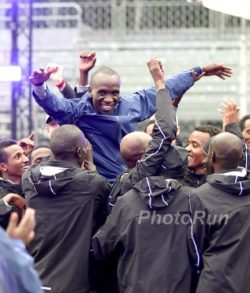
On Twitter, I read that 4.7 million people followed the test run via Livestream. I, too, hang out late into the night in order to understand the extent of this organized and orchestrated experiment by sporting sponsor NIKE. The event, once again, brought the sport of running into the wider public limelight and opened up new questions and impulses.
Research drives us to new heights. Or is it the athletes who are driving the research? The hunt for records seems to lie deep in our nature.
Take the speed record of the American Gary Gabelich almost 50 years ago in the Great Salt Desert in the U.S. state of Utah. It must have been overwhelming as he drove his rocket vehicle, for the first time, more than 1000 kilometers per hour. Or another top performance: Roger Bannister ran the English mile (1609 meters) on May 6, 63 years ago, to become the first athlete under four minutes. I would have liked to have been there to watch it.
We humans want to overcome boundaries. We break with the old, tear down walls. Science moves us forward on our path of evolution. As with this test run, though, it cannot be compared with a conventional marathon. As an experiment, however, it was great.
Eliud Kipchoge’s time is not recognized as a marathon record. The pace makers were exchanged and fresh runners entered during the run, which is contrary to the competition rules of the International Associations of Athletics Federations (IAAF). In front of the pacers and the three participating athletes a leading car drove with an oversized time display, not unjustly seen as an unreasonable assist by critics. Nevertheless, the time of 2:00:25 for the 42,195 kilometers on the fast, perfectly paved 2.4-kilometer circuit—without tight corners (which slow runners down) like in many city marathons—is breathtaking.
From all observations, I found two aspects particularly remarkable. On one hand, the reliable pace-setting by the entire team, implemented like clockwork. On the other hand, Eliud’s overall approach during the run: his tremendous focus, his efficient running style, and his unique mental relaxation despite the enormous task.
It is what makes him exceptional. The ability to concentrate yet stay loose in spite of the workload, adapted during years of training, and applied so perfectly here on the day of the race. As he said afterwards, “It was hard. It was long. …took seven months’ preparation.”
What’s Next in Speed Marathon Running?
Only 26 seconds short. Not even one second per mile. What will be possible in the future? Will there be another test run, and if so, what will change? Can the conditions be optimized, maybe for a city marathon? It is to be noted that an athlete has only a limited number of attempts to prepare for such a race during his career.
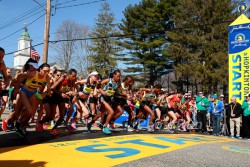
Can the advantage of the irregular pace making be compensated for by a larger field of world-class athletes—joined by young talents who have shown that they can already test themselves at top elite world level? And we must not forget the motivating effect of the “cheering energy” generated by thousands of spectators, especially after the 35-kilometer mark when two—or, almost impossibly, three—athletes reach for glory at the end of the marathon.
We learned so much from this test. The exchange of ideas about race strategy, science, nutrition and shoe technology was stimulating.
But is there something that has been lost to us? Will we now compare the top marathon times and a new world record with the 2:00:25 hours? The current record is at 2:02:57. Will the next man who breaks this time be seen in a different light?
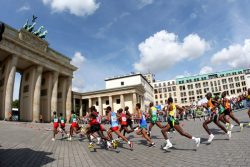
On the world stage of sport so much is about drama and emotions. The spectators cheer and suffer when the goal in soccer is ruled offside, when Ferrari is racing at the Formula 1 in Monza to a track record, when the leading runners sprint down Boylston Street and through the Brandenburg Gate towards the Finish Lines after a hard-fought 26 miles in the Boston and Berlin Marathons. This is when we would like to be a spectator.
The myth of the Marathon reaches back to 490 BC. The unique distance has a special place in the world of sport, almost sacred. A myth full of dramas, filled with sacrifices, victories, and defeats.
We will soon experience them—close up along the course, in jubilation with the athletes—during another attempt to run a marathon dream time of less than two hours.
Yours,

Adapted from Uta’s column „Wir Menschen wollen einfach Grenzen überwinden“ in DIE WELT with permission.
*Uta Pippig, 51, is one of the most successful female marathon runners of the ’90s. She has won Berlin and Boston three times each. Today she lives in Berlin, Germany, and in Boulder, Colorado, and with her organization “Take The Magic Step®” she commits herself to increasing people’s awareness in the areas of fitness, nutrition and health.
Reading Suggestions:
- Periods of Training for Your Marathon Preparation and Distance Progression for Your Long Runs
- Run Your First 5K
- Posted June 1, 2017
© Copyright 2017-2024 Uta Pippig and Take The Magic Step®. All Rights Reserved.
More Insights

Uta’s Favorite Exercises to Improve Your Fitness and Running Technique
Uta Pippig has designed an at-home fitness program which only uses your own body weight, steps, and a Theraband. They are eight exercises that Uta often does herself.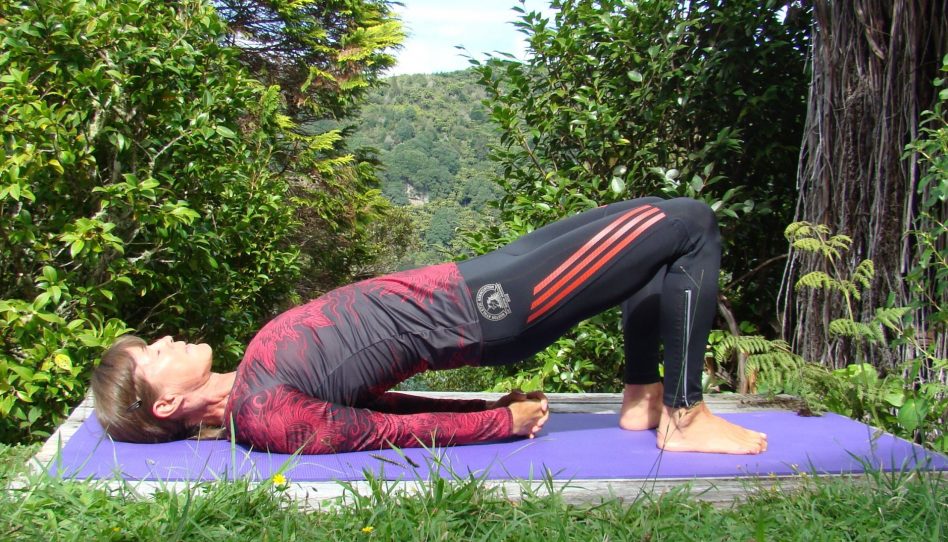
Uta’s Yoga and Stabilization Guide for a Better Running Technique
Runners, especially, can benefit from a well-balanced yoga and stabilization program. Uta suggests effective combinations of poses and exercises that have helped her gain the flexibility and balance that can lead to a better running technique for everyone.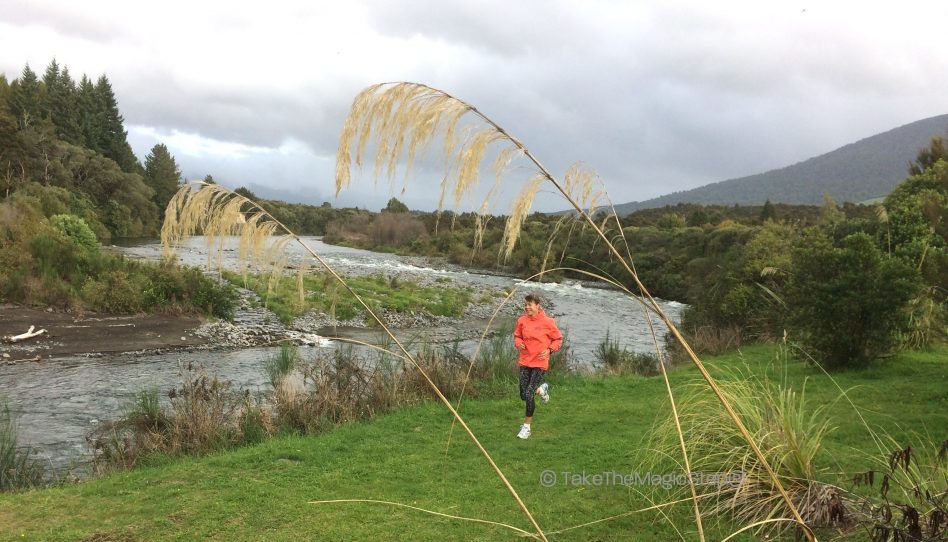
How a Clever Mental Focus Can Get You Through Running Injuries
Running injuries can be devastating, but learning to focus mentally can speed up the healing process. Uta explains how the forced break from running can actually provide future benefits.